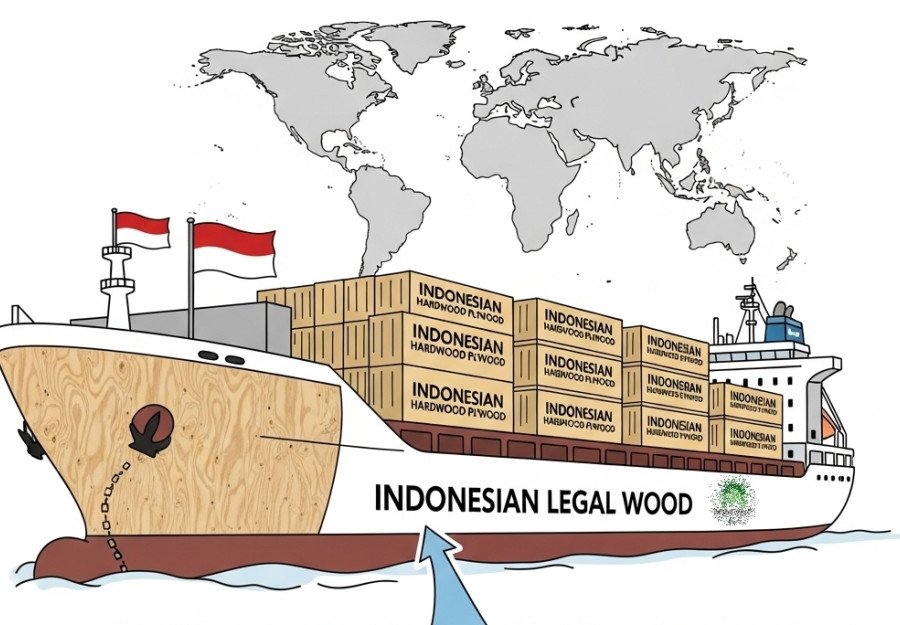Indonesia's Plywood Export Outlook to the Middle East: Geopolitics and Seasonal Lulls Restrain Growth
Indonesia's Plywood Export Outlook to the Middle East: Geopolitics and Seasonal Lulls Restrain Growth
- 07 Jul 2025, 11:39
Jakarta, APKINDONews - Indonesia's plywood export market to the Middle East has faced increasing complexity throughout 2024 and into the first quarter of 2025. The fluctuations in export volume and value are not merely reflections of market demand, but also symptomatic of geopolitical instability and seasonal cycles that continue to suppress regional demand. According to data from BPS-Statistics Indonesia, although there is a modest year-on-year (YoY) growth, pressures from both demand and logistical bottlenecks remain significant.
From May 2024 to April 2025, Indonesia's plywood export volume to the Middle East saw dramatic swings. Export peaks were recorded in August 2024 and March 2025 at 36,612 m3 and 35,584 m3, respectively. In contrast, June 2024 and April 2025 marked steep declines to 14,181 m3 and 11,603 m3. The drop in demand from Saudi Arabia, which fell by 81% in April alone, was a key contributor to the overall 67.4% monthly decline.
Saudi Arabia, accounting for over 45% of total export volume, remains a bellwether for regional demand. Its sharp contraction not only reflects seasonal construction slowdowns due to extreme heat but also signals the deepening impact of escalating regional conflicts—particularly the ongoing tensions involving Iran, Israel, and the Houthi movement.
These geopolitical frictions have further strained freight logistics. Disruptions in key maritime routes such as the Red Sea and the Strait of Hormuz have driven up shipping costs, prompting buyers to adopt a cautious "wait and see" approach. In such conditions, importers are hesitant to commit to new orders amid uncertainty over logistics and pricing stability.
Nevertheless, plywood exports to the Middle East from January to April 2025 grew by 6.19% compared to the same period in 2024, rising from 87,434 m3 to 92,844 m3. This indicates a resilient demand foundation, albeit one that is challenged by short-term, non-economic disruptions.
Countries like the UAE, Jordan, Iraq, and Kuwait continue to be stable secondary markets, while non-traditional destinations such as Qatar, Morocco, and Lebanon are showing emerging demand potential, albeit from a low base. Long-term market diversification will be crucial for Indonesian exporters seeking to hedge risks and sustain growth.
The extreme summer conditions in the Middle East have historically led to lower construction activity. The period from June to August is typically a low season for wood-based product demand. When coupled with today’s geopolitical uncertainties, these dual pressures create formidable barriers that require adaptive and responsive market strategies.
Looking ahead, Indonesian plywood manufacturers must remain attuned to regional developments. Growth opportunities persist, particularly with large-scale development agendas like Saudi Vision 2030 and post-conflict reconstruction plans across the Middle East. However, realization of these opportunities hinges on political stability and logistical certainty.
Indonesia, as one of the world's leading plywood exporters, holds significant potential to expand its market share—provided it maintains supply continuity and aligns its output with evolving regional demand. A coordinated approach among industry players, export associations, and trade diplomacy will be key to sustaining and expanding Indonesia’s footprint in the increasingly volatile Middle Eastern market.
This region will continue to be a strategic destination for Indonesian plywood. Yet, only exporters who understand and navigate the twin dynamics of politics and climate will prevail in the race for export competitiveness amid global uncertainty. (geo_rob)


